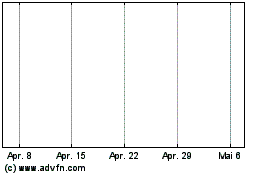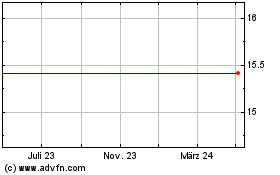By Nora Naughton and Mike Colias | Photographs by Bridget Bennett for The Wall Street Journal
Utah dealer Stephen Wade is running out of pickup trucks -- and
fast.
Normally he keeps about 200 Ram pickups in stock at his
dealership in St. George, Utah. As of this week, he had only 25.
The situation is even more dire at his nearby Chevrolet business:
He has only four Silverado trucks on the lot and isn't sure when he
will get more.
"We seemed to have reasonable inventory at the end of last
year," said Mr. Wade, who has eight dealerships in southern Utah.
"But it's just gotten shorter and shorter."
Auto executives and dealers entered 2021 hoping to restock
dealerships depleted by pandemic-related factory shutdowns last
spring. Instead, parts shortages and other factors disrupting
production have extended the inventory crunch, and auto retailers
said it could be months before relief comes.
For buyers, there are slimmer pickings, higher prices and longer
waits, dealers and analysts said. Many consumers have had to order
models from the factory or pick from vehicles still in transit to
the dealership, rather than immediately driving their new rides off
the lot.
The lack of new cars stands as a barrier to what could be a
strong bounceback year for the industry. Analysts said pent-up
demand, continued low interest rates and a new round of stimulus
checks going to consumers should help lift showroom traffic in the
coming months as the industry's spring selling season gets under
way.
A monthslong shortage of semiconductors has forced auto makers
to cut production of even their most-lucrative vehicles. Winter
storms in Texas last month disrupted plastics production, leading
to shortages of seat foam and other materials, car makers and
suppliers have said. A backup at West Coast ports is delaying
vehicle-part shipments from Asia.
The supply-chain disruptions began late last year and have hit
almost every major auto manufacturer in recent months, from
Volkswagen AG and Nissan Motor Co. to General Motors Co.
Honda Motor Co. and Toyota Motor Corp. were the latest to be
affected, halting production at some North American factories in
recent days. The companies said a confluence of factors led to the
work stoppages, including chip shortages, freak weather and port
backups.
Meanwhile, car buyers have continued snapping up vehicles,
propelling U.S. auto sales to near-normal levels after sales tanked
early in the pandemic. The stronger-than-expected demand has led to
months of tight inventories thanks to a nearly two-month factory
shutdown last spring.
Auto makers started the year making some headway replenishing
U.S. dealership lots. Worsening supply-chain problems have erased
that progress.
At the end of February, dealers had 2.7 million vehicles in
stock or being shipped to stores, a 26% drop from the same month
last year, according to Wards Intelligence. That is nearly as low
as last summer, when U.S. car factories were stirring back to life
after the shutdown.
"Stimulus is flowing, tax refunds are being issued, and consumer
sentiment is recovering," said Jonathan Smoke, chief economist at
research firm Cox Automotive. Because consumer demand for new
vehicles is expected to strengthen this spring, the inventory
crunch is likely to get worse, he added.
For buyers, bargains are becoming harder to find. Many auto
makers have curtailed the deep discounts they offered early in the
pandemic. Car companies on average spent about $3,562 per vehicle
on discounts and other sales incentives in February, a $600 drop
from the same month a year earlier, according to research firm J.D.
Power.
The lack of availability has been most acute for crossover and
SUV models, including Jeep's Wrangler and Chevrolet's Tahoe, stocks
of which are running between 43% and 70% lower than a year ago,
respectively, according to Wards Intelligence data.
GM and Ford Motor Co. have closed some North American factories
for several weeks because of the chip shortage, crimping supply of
several sport-utility models. GM has said the lost production could
hurt pretax profit by as much as $2 billion this year; Ford pegged
the hit at up to $2.5 billion.
In recent weeks the chip shortage has disrupted the profit
center for U.S. auto makers: pickup trucks.
For months, GM, Ford and Ram-brand owner Stellantis NV had been
able to sustain pickup-truck deliveries by diverting computer chips
from other, less-profitable vehicles. But in recent weeks, each
said it has started building trucks without the chips and parking
them as they await shipments.
Dealers had about 414,000 pickup trucks at the end of February,
roughly half the number from a year earlier, according to Wards
Intelligence.
Some dealers are shifting would-be new vehicle buyers to the
used-car lot, but even that is becoming more difficult, dealers
said, as they seek out used cars to offset the inventory problem in
new vehicles.
Abel Toll, a dealer with stores in the Northeast, said his
used-vehicle inventory is running low. Reliable sources for
preowned models such as vehicle trade-ins and gently used rental
cars from auctions have shriveled, he said, creating a supply issue
and a surge in prices.
"Inventory will be the big challenge of this year," he said.
Write to Nora Naughton at Nora.Naughton@wsj.com and Mike Colias
at Mike.Colias@wsj.com
(END) Dow Jones Newswires
March 24, 2021 05:44 ET (09:44 GMT)
Copyright (c) 2021 Dow Jones & Company, Inc.
Stellantis NV (BIT:STLA)
Historical Stock Chart
Von Mär 2024 bis Apr 2024

Stellantis NV (BIT:STLA)
Historical Stock Chart
Von Apr 2023 bis Apr 2024
